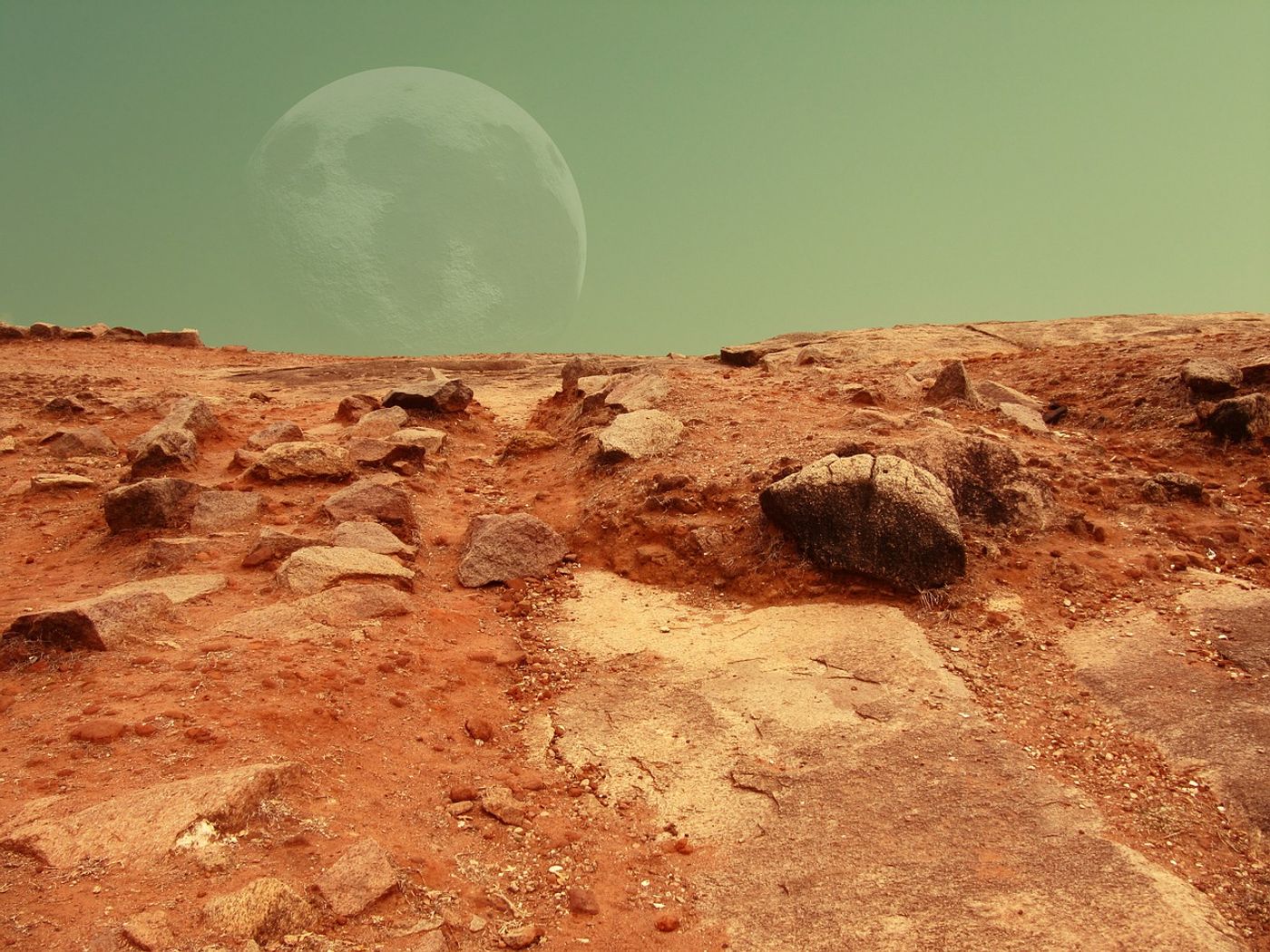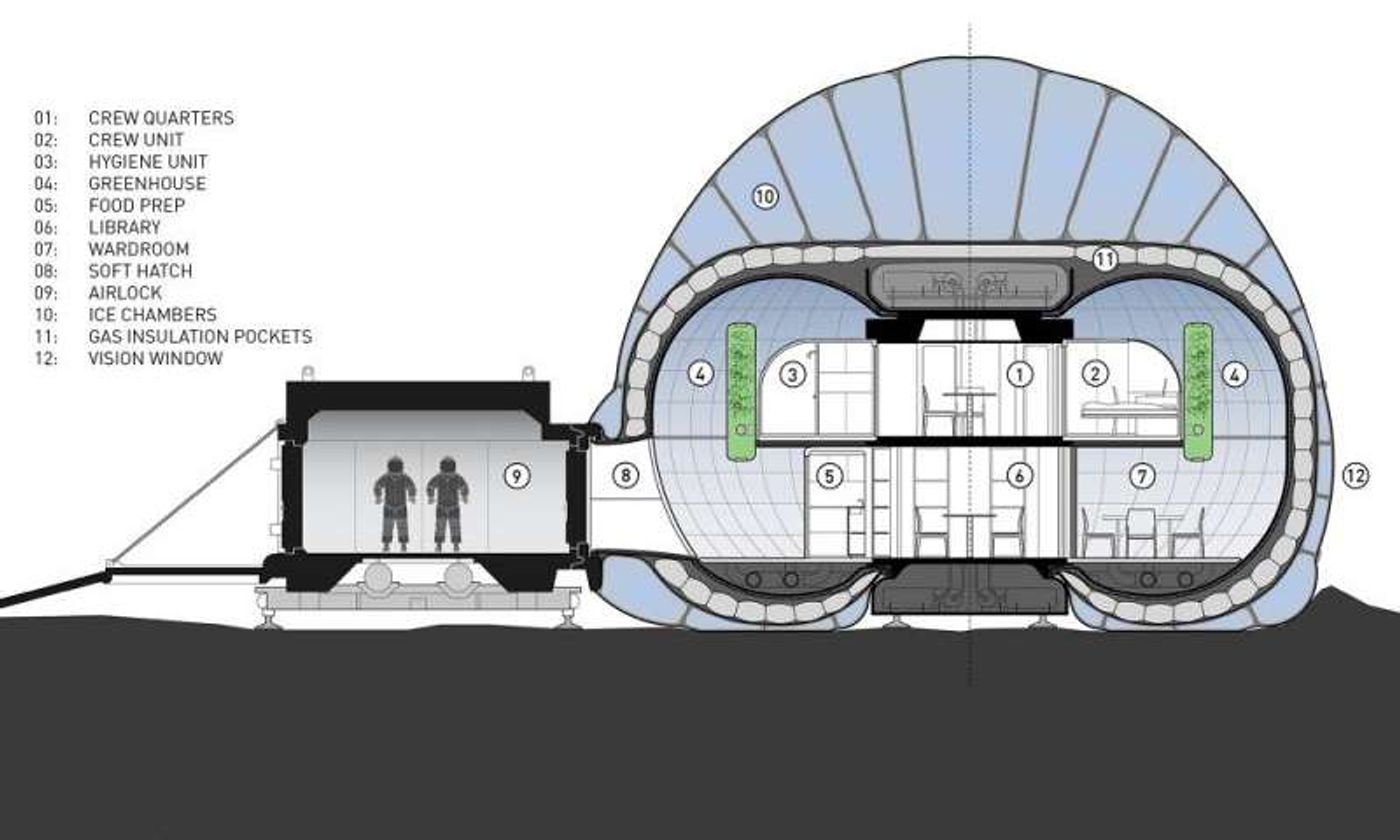Will the First to Visit Mars Live in Ice Dome Houses?
One thing NASA wants to do within just a few more decades it put mankind on Mars. Whether they’re settle there permanently, or just for several years remains to be seen, but it goes without saying that this is going to be a major push for technological advancements.
Image Credit: ChadoNihi/Pixabay
Mankind has never stepped foot on another planet before, and although we’ve gone to the Moon, another planet is significantly different because it’s so much further away. This makes things more difficult because it’s hard to get the visitor to and from the planet, as well as to send and receive supplies.
On the other hand, one other thing that serves as a problem for the astronauts is that once they leave the Earth’s atmosphere, they’re no longer protected from cosmic radiation.
Astronauts that visit the International Space Station may see more cosmic radiation than those of us here on the surface of the Earth do, but they’re still technically in the atmosphere, which continues to provide them with some protection.
On the other hand, when astronauts went and visited the Moon, they were exposed to a very high amount of cosmic radiation because they literally left the Earth’s atmosphere. Such conditions are expected to be similar or even worse when astronauts visit Mars, because the trip to Mars could take about six months, which means prolonged exposure to such radiation.
While NASA can do their best to shield the traveling spacecraft from cosmic radiation with special types of armor, they will also need to shield their astronauts from cosmic radiation when they settle on the red planet, as Mars doesn’t have a very robust atmosphere like the Earth does, and a new idea suggests that igloo-like ice domes might be the answer.
Image Credit: Clouds Architecture Office, NASA Langley Research Center, Space Exploration Architecture
According to scientists at NASA’s Langley Research Center, creating ice domes could be viable because there’s supposedly already water ice trapped in the surface of Mars and we would just need to send lightweight construction materials to the red planet for construction. Walls of ice also have a high tolerance for radiation, and so it would work good as a shield.
Such a dome would have transparent layers so that sunlight could pierce the walls and provide astronauts inside with a comfortable living space, but the thick ice walls would prevent cosmic radiation from harming the astronauts that reside inside all while helping to shield astronauts from other hazards, such as dust storms.
"The materials that make up the Ice Home will have to withstand many years of use in the harsh Martian environment, including ultraviolet radiation, charged-particle radiation, possibly some atomic oxygen, perchlorates, as well as dust storms – although not as fierce as in the movie 'The Martian'," said Langley researcher Sheila Ann Thibeault.
The dome would be pretty large, being a double-story living space for visitors with all of the ammenities you'd expect a house for a human being to have.
Image Credit: NASA Langley/ Clouds AO/SEArch
Because of the limited amounts of water in Mars’ surface, it would take a while for NASA to pump enough water out to fill the dome’s walls. According to NASA, it would be possible to pump approximately 1 cubic meter of water each day, which means it could take up to 400 days to fill the entire proposed structure. The timeframe could, of course, be sped up if water can be extracted in larger quantities much faster.
That said, construction would have to begin a significant amount of time before astronauts ever arrived at the red planet, which means robotics might play a big role in assembly.
While these domes are still just proposals at this point in time, they provide a good alternative to underground caves and other similar, potentially unsafe conditions. It will provide more light for the astronauts, which is potentially better than living in a dark cave, and since the unit can be placed anywhere, no one has to hope that a convenient cave exists somewhere where astronauts will want to explore.
Mars exploration by humans rather than robots is expected to take place within just a few more decades, so it should be very interesting to see how our space experts are going to tackle this challenging task.











